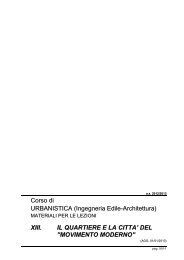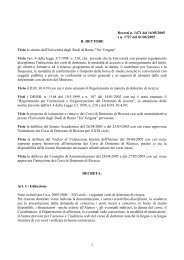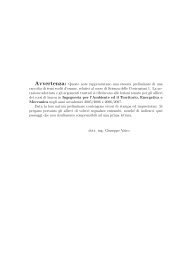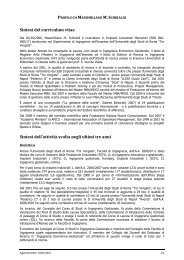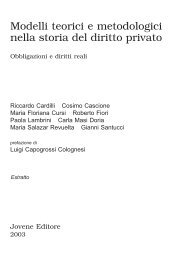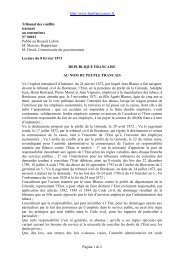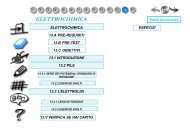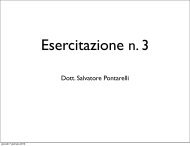Puneet Khandelwal, Soman N. Abraham and Gerard Apodaca
Puneet Khandelwal, Soman N. Abraham and Gerard Apodaca
Puneet Khandelwal, Soman N. Abraham and Gerard Apodaca
Create successful ePaper yourself
Turn your PDF publications into a flip-book with our unique Google optimized e-Paper software.
the tight junction (9). Examples of the former include ZO-1, as<br />
well as regulatory GTPases, phosphatases, <strong>and</strong> kinases. Transmembrane<br />
proteins associated with the tight junction include<br />
the claudins, occludin, the coxsackie/adenovirus-associated receptor,<br />
the junctional adhesion molecules, <strong>and</strong> tricellulin (9).<br />
The claudins are a family of 24 proteins that are localized to<br />
tight junctions in a tissue- <strong>and</strong> segment-specific manner (114,<br />
165). Common features of claudins are their size (20–25 kDa),<br />
their domain structure, which includes four transmembrane<br />
segments <strong>and</strong> two extracellular loops <strong>and</strong> a COOH-terminal<br />
PDZ-binding motif that promotes interactions between the<br />
claudins <strong>and</strong> proteins, such as ZO-1, that contain PDZ motifs<br />
(73). Claudins play an important role in regulating paracellular<br />
transport, which is the subject of a recent review by Angelow<br />
et al. (9).<br />
The specific claudins associated with the uroepithelium are<br />
now being enumerated <strong>and</strong> their localization is being described.<br />
Claudin-4, -8, -12, <strong>and</strong>, possibly, -13 are found in the<br />
uroepithelium of rat, mouse, <strong>and</strong> rabbit bladders (Fig. 5, B <strong>and</strong><br />
C) (2, 149). In all three species, claudin-8 (Fig. 5B) <strong>and</strong> -12 are<br />
specifically localized to the apicolateral tight junctions of the<br />
umbrella cell layer. In contrast, claudin-4 is associated with the<br />
tight junctions, as well as the basolateral surface of the umbrella<br />
cells <strong>and</strong> the plasma membrane of the underlying cell<br />
layers (Fig. 5C). Nonjunctional claudin expression has been<br />
described in other tissues (66, 75, 137). Although its function<br />
is unknown, it may serve to promote cell-cell adhesion, act as<br />
a reserve pool of claudin molecules, or provide a mechanism to<br />
limit paracellular ion flow across the uroepithelial tissue when<br />
the umbrella cell layer is disrupted. Claudin expression has<br />
also been examined in human tissues <strong>and</strong> cultures of human<br />
uroepithelium. Using probes for claudin-1 to -10, Varley et al.<br />
(210) found that claudin-3, -4, -5, <strong>and</strong> -7 are expressed in<br />
human ureteric uroepithelium. Claudin-3 is localized at the<br />
umbrella cell tight junction, claudin-5 is expressed at the<br />
basolateral surface of the umbrella cell layer, claudin-4 is<br />
distributed at the intercellular borders of all uroepithelial cell<br />
layers, <strong>and</strong> claudin-7 is localized to the membranes of the<br />
intermediate <strong>and</strong> basal cell layers. Furthermore, RT-PCR data<br />
indicate that claudin-1, -2, -8, <strong>and</strong> -10 may also be expressed in<br />
the human uroepithelium. This list may not be exhaustive, as<br />
the immortalized TEU-2 cell line, which is derived from<br />
human ureter, expresses claudin-1, -4, -5, -7, -14, <strong>and</strong> -16 at the<br />
junction of the superficial cell layer (168). In contrast, claudin-1,<br />
-4, -5, <strong>and</strong> -7 are found along the lateral surfaces of these<br />
cells, <strong>and</strong> claudin-2, -8, <strong>and</strong> -12 are found in vesicular structures<br />
scattered throughout the cell cytoplasm. Because these<br />
TEU-2 cells are transformed, it will be important to determine<br />
whether claudin-12, -14, <strong>and</strong> -16 are expressed in native human<br />
uroepithelium.<br />
What is striking is the large number of claudins that are<br />
associated with the tight junction of the umbrella cells. Some<br />
of the diversity may result from species differences or expression<br />
that reflects the growth <strong>and</strong> differentiation state of cultured<br />
uroepithelium. Claudin expression in culture epithelium can be<br />
modulated by the nuclear hormone receptor peroxisome proliferator-activated<br />
receptor-�, which stimulates uroepithelial<br />
differentiation <strong>and</strong> promotes claudin expression <strong>and</strong> localization<br />
at the tight junctions <strong>and</strong> intercellular borders of the<br />
cultured cells (210). In addition, the uroepithelium that lines<br />
the ureters, bladder, <strong>and</strong> upper urethra may be distinct (169,<br />
THE UROEPITHELIUM<br />
AJP-Renal Physiol • VOL 297 • DECEMBER 2009 • www.ajprenal.org<br />
Review<br />
F1483<br />
230), <strong>and</strong> these regional differences may be reflected in regionspecific<br />
claudin expression.<br />
An important next step is to underst<strong>and</strong> which claudin(s)<br />
contributes to the high-resistance paracellular pathway that is<br />
associated with the umbrella cell layer. In essence, this pathway<br />
appears to be nonconductive (estimated to be �300,000<br />
��cm 2 ) (134, 135), at least in quiescent tissue, which indicates<br />
that the individual claudins or combination of claudins expressed<br />
by the umbrella cell may not form pores or may form<br />
pores with very high resistance. Future studies that examine the<br />
role of claudins will be aided by a growing list of knockout<br />
(KO) mice lacking expression of individual claudins <strong>and</strong> techniques<br />
that allow for the in situ transduction of rat bladder<br />
umbrella cells using adenoviruses (112, 166). For example,<br />
virus-encoded short hairpin RNAs could be used to downregulate<br />
expression of single or multiple claudins. Additional topics<br />
for exploration are as follows. 1) How is the paracellular<br />
barrier maintained or altered as the umbrella cells increase their<br />
apical surface area <strong>and</strong> outer diameter (i.e., junctional ring) as<br />
the bladder fills? 2) What happens during bladder voiding<br />
when the process reverses?<br />
Study of claudins will also contribute to our underst<strong>and</strong>ing<br />
of bladder-associated disease processes. A growing literature<br />
indicates that changes in claudin expression may alter the<br />
metastatic potential of numerous tumor types (199), <strong>and</strong> alterations<br />
in expression of tight junction proteins may also play an<br />
important role in the genesis of bladder cancer (84). Furthermore,<br />
disruptions of tight junctions may contribute to bladder<br />
conditions such as outlet obstruction, bacterial cystitis, spinal<br />
cord injury, <strong>and</strong> interstitial cystitis (IC), all of which are characterized<br />
by alterations of the uroepithelium <strong>and</strong> umbrella cell junctional<br />
complex (12, 106, 119, 127, 128, 149, 213, 215, 237). In<br />
most cases, the cellular defects that lead to disruptions of tight<br />
junction function are not understood, but in IC it may be<br />
related to release of antiproliferative factor (APF) from the<br />
uroepithelium. APF is a nonapeptide (T-V-P-A-A-V-V-V-A)<br />
that is identical to residues 541–549 of the sixth transmembrane<br />
domain of the Wnt lig<strong>and</strong> receptor Frizzled 8 (109). As<br />
its name implies, APF inhibits proliferation of uroepithelial<br />
cells (108). The putative receptor for APF is the cytoskeletonassociated<br />
protein 4/p63, which is expressed by isolated uroepithelial<br />
cells (44). Cultured uroepithelium from IC patients<br />
shows increased paracellular flux of tracers <strong>and</strong> decreased<br />
expression of ZO-1 <strong>and</strong> occludin (237). It is striking that<br />
treatment of normal uroepithelial cells with APF results in an<br />
IC-like phenotype, characterized by increased paracellular flux<br />
<strong>and</strong> decreased expression of tight junction-associated proteins<br />
(237). Further study of these pathways should provide additional<br />
information about how tight junctions are modulated in<br />
bladder diseases such as IC.<br />
Expression <strong>and</strong> function of aquaporin water channels in the<br />
uroepithelium. In mammals, aquaporins (AQPs) form a family<br />
of 13 integral membrane proteins, which form pores <strong>and</strong><br />
principally transport water (AQP-1, -2, -4, -5, <strong>and</strong> -8) or<br />
glycerol <strong>and</strong> other small solutes (AQP-3, -7, <strong>and</strong> -9) (217).<br />
They are widely expressed by epithelial cells, including those<br />
lining the nephrons of the kidney, endothelial cells, <strong>and</strong> the<br />
epidermis, as well as nonepithelial cells, such as adipocytes.<br />
They play important roles in fluid homeostasis in the kidney,<br />
gl<strong>and</strong>ular fluid secretion, water flux in the brain, modulation of<br />
glycerol content in the skin <strong>and</strong> fat cells, <strong>and</strong> cell migration<br />
Downloaded from<br />
ajprenal.physiology.org<br />
on October 6, 2010



